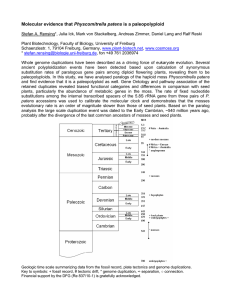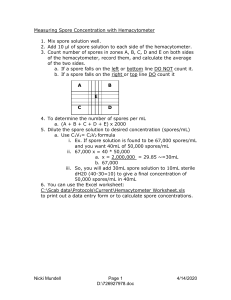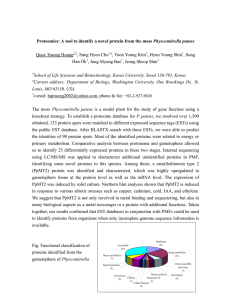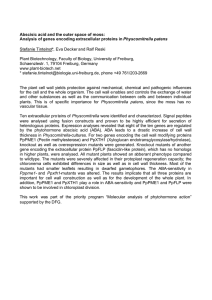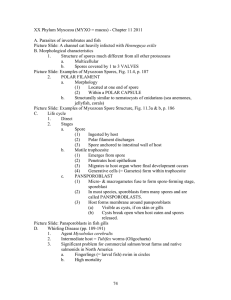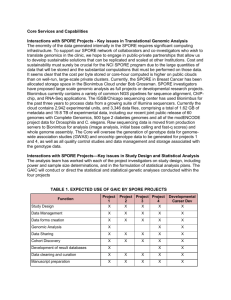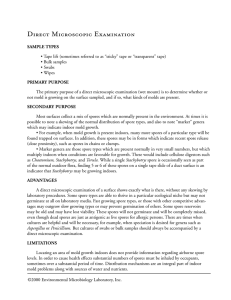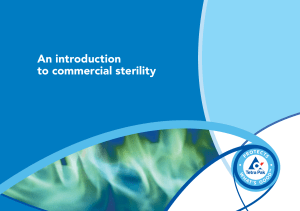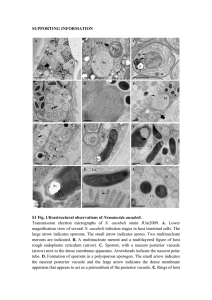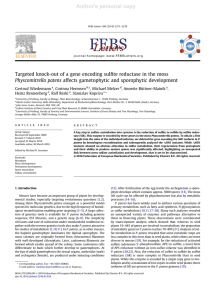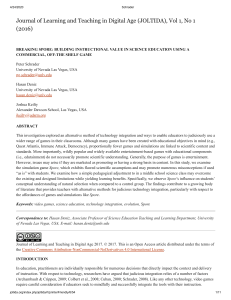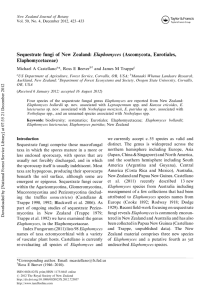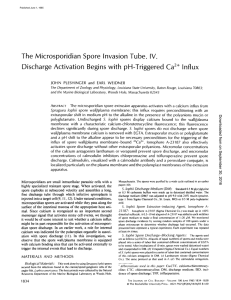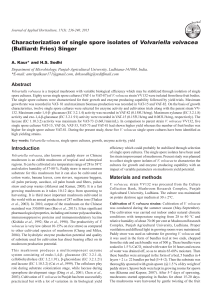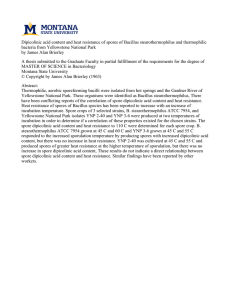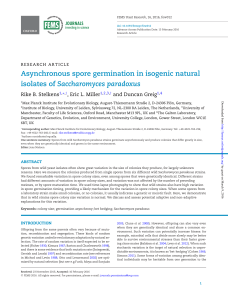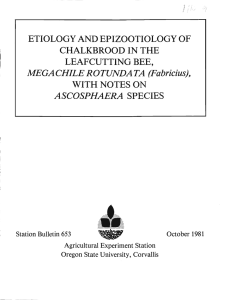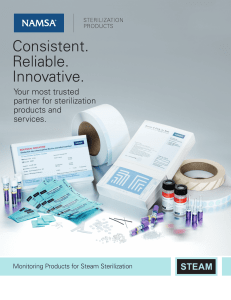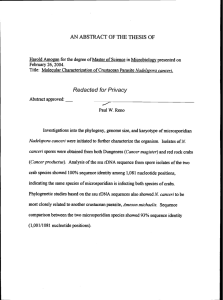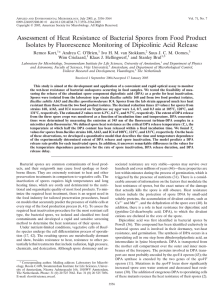Physcomitrella patens Scott Schuette * and Karen Renzaglia Department of Plant Biology
advertisement
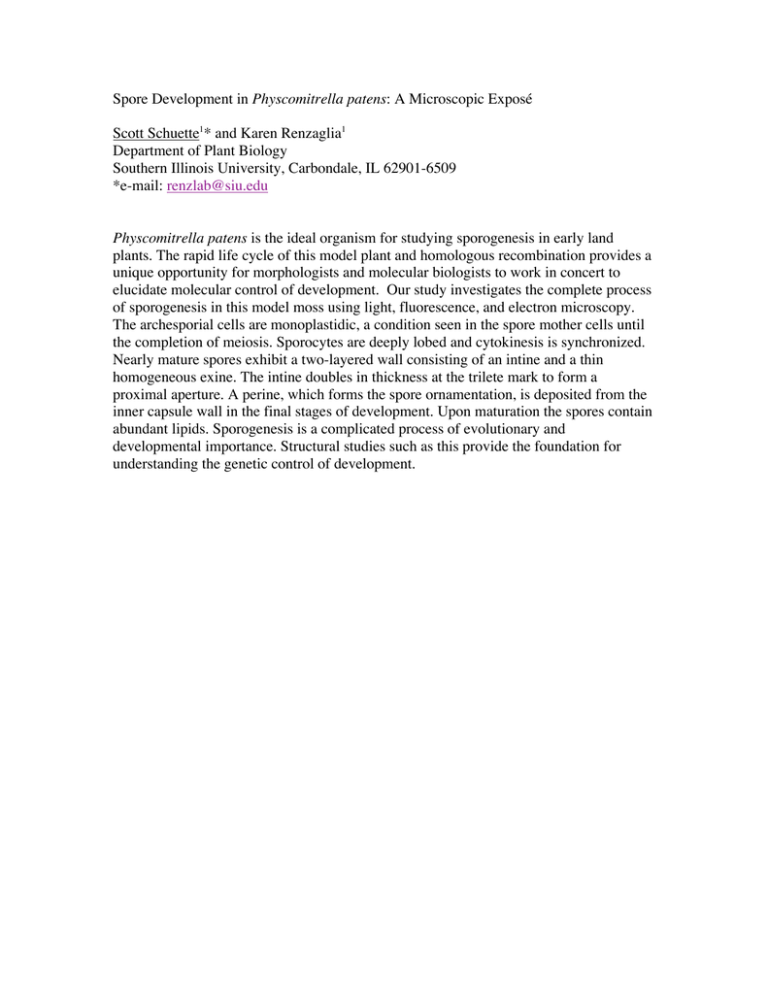
Spore Development in Physcomitrella patens: A Microscopic Exposé Scott Schuette1* and Karen Renzaglia1 Department of Plant Biology Southern Illinois University, Carbondale, IL 62901-6509 *e-mail: renzlab@siu.edu Physcomitrella patens is the ideal organism for studying sporogenesis in early land plants. The rapid life cycle of this model plant and homologous recombination provides a unique opportunity for morphologists and molecular biologists to work in concert to elucidate molecular control of development. Our study investigates the complete process of sporogenesis in this model moss using light, fluorescence, and electron microscopy. The archesporial cells are monoplastidic, a condition seen in the spore mother cells until the completion of meiosis. Sporocytes are deeply lobed and cytokinesis is synchronized. Nearly mature spores exhibit a two-layered wall consisting of an intine and a thin homogeneous exine. The intine doubles in thickness at the trilete mark to form a proximal aperture. A perine, which forms the spore ornamentation, is deposited from the inner capsule wall in the final stages of development. Upon maturation the spores contain abundant lipids. Sporogenesis is a complicated process of evolutionary and developmental importance. Structural studies such as this provide the foundation for understanding the genetic control of development.
